Magen Cubed's Blog, page 2
May 12, 2016
#AskMeAnything Vlog #2
Welcome to the latest episode of Magen Cubed's AMA vlog! Do you have creepy and invasive questions? Then I have creepy and invasive answers!
Want to ask me something? Check out my Facebook and Twitter for the weekly AMA threads.
May 2, 2016
Chaos Theater Podcast Ep. #106: The Crashers

Chaos Theater talks about superheroes of a different variety as Magen Cubed joins us to discuss her new novel, The Crashers. Please note that after this episode was recorded it was announced that her publisher is ceasing operations. The book will be pulled from all storefronts both in print and digitally on May 31, so if you're considering getting the book, do so before then. Magen will be searching for a new publisher, but it's unclear how long that process could take.
April 27, 2016
#AskMeAnything Vlog #1
Introducing my new #AskMeAnything vlog! Do you have creepy and invasive questions? Then I have creepy and invasive answers! Books, writing, small dogs, TV shows -- anything goes.
Want to ask me something? Check out my Facebook and Twitter for the weekly AMA threads.
April 19, 2016
Author Interview: From The Bookie Monster

The Bookie Monster Interviews Magen Cubed, author of The Crashers.
Magen Cubed is an author of novels about monsters, superheroes, and various other kinds of strangeness. Her first novel Fleshtrap was released in 2013 from Post Mortem Press. She is published and represented by Booktrope. Magen lives in Texas with a little dog named Cecil.
Tell us a little about yourself, your work and how you got into writing.I am a writer, student, occasional critic, and blogger-type-person from Texas. Starting out writing weird tales and horror, I wandered back toward my longtime love of superhero fiction, becoming a comic book reviewer for three years. You can find some of my writing on ComicBooked.com, Comiconverse.com, and a few other odds and ends places.
I initially got into writing many years ago, while under the delusion that I would be a comic book writer. Unfortunately, I’m terrible at scripting, so prose it was. My new book, The Crashers, comes out of my lifelong love of the comic book medium, as well as the superhero genre specifically. It’s very much my love letter to/deconstruction of superhero comics as we know and love (or hate) them today.
The book follows five very normal, very imperfect people who gain powers through a shared trauma, and how they deal with the consequences of this experience. People with anxiety and depression, illnesses and divorces, criminal records and kids to take care of. There are no capes or mustache-twirling villains – just people trying to keep their heads above water, thrust into something they don’t understand, and trying to survive it together.
I’m interested in using well-trodden genre convention to play with new ideas, and tell familiar stories from fresh perspectives that we don’t often see in the mainstream.
You can read the rest here at The Bookie Monster!March 28, 2016
This is a Story about Houses: The Relationship Between Will Graham and Edward Hopper

Will Graham, Subjectivity, and the Gaze
For me, I understood - because I’m obsessed with both of these artists - that Hannibal was going to be a juxtaposition of the artistic styles of Francis Bacon, against Edward Hopper. That really was the informing vision for the show. Will Graham is very much Edward Hopper, Hannibal Lecter is very much Francis Bacon, and what happens when those two worlds come crashing together?
— Bryan Fuller, Crave Online, November 2015
Spaces are vital things in the language of visual storytelling. Will Graham of NBC’s Hannibal is a character very much defined by his spaces. Never at home within the slick, cultured veneer of metropolitan living (the explicit domain of the show’s titular Hannibal Lecter), Will lives in a little house on a tidy parcel of land. He singularly haunts cluttered rooms, occupied by his pack of rescued dogs and strays that break the silence of an insular rural life in Wolftrap, Virginia.
The house is where Will is as safe as he can, against the horrors of his own imagination. It is his boat on a stormy sea. In this little house, Will is also most himself, shielded from the power of the gaze of others. Because in the context of Hannibal’s claustrophobic, fishbowl of a universe, Will is the consummate subject to gaze.
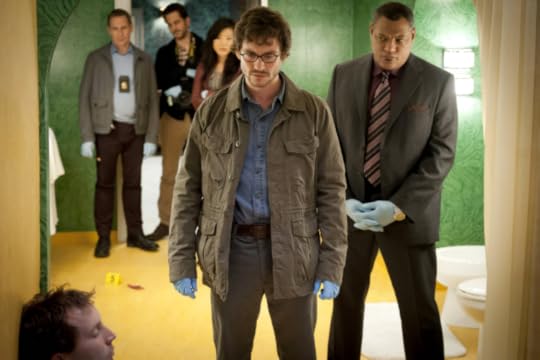
Be it the gaze of the audience, the scrutiny of both Jack Crawford and Alana Bloom with respect to his mental state, or the pervasive, penetrative study of Hannibal Lecter, Will Graham is always being watched. He is always influenced by and reflective of the anticipation of others. Through his empathy disorder, he assumes their perspectives, attempts to meet their expectations, and mirrors what they want him to be. The world is dangerous to Will Graham, and so are its people, their best intentions aside. They study him, they manipulate him, and they fray at the corners until he can no longer protect himself from their influence.
This is how the audience can best understand Will: as a man in an intimate relationship with his house. It harbors him, shelters him, and contains the parts of him that threaten to leech out. To better understand this, one must look to the work of Edward Hopper for context.
Edward Hoppper and The Power of Looking
There is a sort of elation about sunlight on the upper part of a house.
— Edward Hopper
Edward Hopper is one of the most immediately recognizable 20th century realists, and one of the most significant American artists in the period. Unlike some of his contemporaries, Hopper’s vision of realism focused less on photorealistic replications of human life. Instead, Hopper privileged the stillness of empty cityscapes and wide, open rural scenes. His sparsely populated canvases flatten refined, photorealistic detail into soft fields of color and relaxed, rounded shapes. Here, lonely figures negotiate the gaze of their viewer, as well as the intrusion of the modern world itself, as it penetrates the canvas itself.
[image error]
Edward Hopper, "New York Office," 1962
Hopper’s figures are often framed by windows, doorways, or other architectural design, holding the viewer at a relative distance. They are disconnected from their surroundings by doors or windows, left with their own thoughts even as they look out onto the city or fields outside. So, too, does the world stare back at them, where the boundaries of glass are made transparent to invite the gaze of the viewer upon them. To fill the vacant spaces of diners after dark, lonesome hotel rooms, or intimate moments in hallways or bedrooms.
[image error]
Edward Hopper, "High Noon," 1949
There is an inherent voyeurism imbedded within Hopper’s work and our engagement with it. It asks the viewer to confront their own need to look – their desire to look, and their privilege in doing so – by making them aware of the constructions that permit their gaze. We are looking into rooms, into moments, and into the lives of people deep in the throes of the mundane. Hopper wants us to remember that.
Houses and buildings are safe spaces in Hopper’s aesthetic schema; like boats at sea, they are adrift in a vast and alienating world. These spaces allow the shadows of common, human sadness to play against bright, warm pools of sunshine or neon light, diffused against wood paneling or bare concrete. Here Hopper’s lonely figure seek shelter from the gaze of others. Whether they are successful, the viewer is left to discern.
Houses, Containment, and the Extension of Self
Sometimes at night I would leave the lights on in my little house and walk across the flat fields. When I looked back from a distance, the house looked like a boat at sea, and all around me the vast Delta night.
— Thomas Harris, Foreword to a Fatal Interview

[image error]
Edward Hopper, "Cape Cod Morning," 1950
This is how we can understand Will Graham. In Hopper’s muted pallets of deep greens, cool blues, and all manners of dusty, earthy brown. They provide visual harmony between Will’s wardrobe and the interior of his house, drawing them together through the small details of plaid shirts and textured wallpaper. The wide porch is his island in the dark, a bright, warm place that wards off the quiet night outside. His house holds nature at bay, as the natural world looms in the peripheral, but with respect.
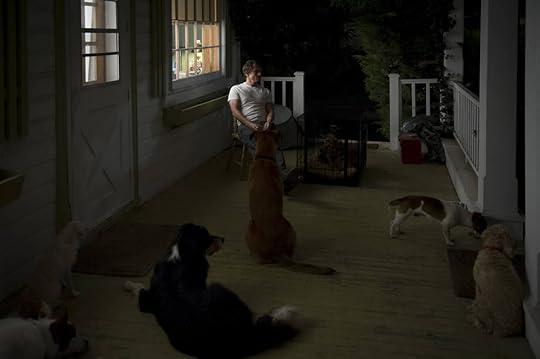
[image error]
Edward Hopper, "Summer Evening," 1947
The aesthetics of loneliness frame Will in windows and doorways. These guiding architectural mechanisms invite the viewer into his little house, filled with the vague artifacts of rural living. Old books and an out of tune piano; eclectic secondhand furniture and homely framed landscape artwork; fishing gear and old boat motors. Half-empty bourbon bottles and glasses in key frames compound that loneliness in shorthand. The details evoke a Hopper-like sensation of voyeurism of gazing into lived-in spaces, where the minutiae of Will’s interiority are flattened to imitate the stillness of a painting.

[image error]
Edward Hopper, "Eleven A.M.," 1926
Both in Baltimore and at Quantico, surrounded by people and more architecturally complex urban spaces, Will is still a man living in Hopper’s world. Muted, rumpled, and slightly oversized wardrobe choices often make him appear smaller and set apart from others. He is marked as plain, simple, and provincial, and constantly in negotiation with his surroundings. This carries from the sleek, metallic intimation of mid-century aesthetics at the offices and labs at Quantico, to the lavish, yawning interiors of Hannibal’s home and office spaces. Wherever he is, Will is a little disheveled, a little remote, and hiding behind the oft-crooked frames that allow him to avoid eye contact in social situations.

[image error]
Edward Hopper, "New York Movie," 1939
As the narratives progresses into the second season, Will spends more time away from his house as a common setting. From here, he is both literally and figuratively consumed by Hannibal’s visually oppressive company. Hannibal, by contrast, is entrenched in the sensibilities of the modern, affluent cosmopolitan. His domain is that of superfluity, in every conceivable sense. From music to food, interior design to costuming, every aspect of his life is designed in the service of overindulgence. Hannibal quite simply assaults the viewer under the facade of intellectual curation and good taste, and is charming enough to get away with it.
At his most simplistic, however, Hannibal is an abstract study in the theatricality of Francis Bacon. He is the intersection of the physical and the existential, where the destruction of the human body is raised to the level of art in the pursuit of pure sensorial experience. He uses the markers of class, status, and high culture to disguise his barbarism as an exercise in superiority over “pigs” and “sheep.” But for all his pretense, Hannibal is more beast than man.

[image error]
Francis Bacon, "Figure with Meat," 1954
While Will’s aesthetics privilege simplicity and stillness of being, Hannibal’s are rooted in opulence and debauchery – blood and bone – polished to a deceptive mirror-shine. Like the living embodiment of Bacon’s Painting (1946), Hannibal is both decadent and grotesque in equal, sumptuous measure. In turn, Will’s core sense of self becomes influenced by and conjoined with that of Hannibal Lecter. This is reflected in his complementary costuming and increasingly cruel outward behavior, as Will is further and further engrained in Hannibal’s world of exalted, absurd depravity.

[image error]
Francis Bacon, "Second Version of Painting (1946)," 1946
Some of this is, of course, performative. “I’m a good fisherman, Jack,” Will says as he knowingly endears himself to Hannibal in order to entrap him for Jack Crawford and the FBI. His innate propensity for violence is less focused and developed than Hannibal’s, but also less self-indulgent. Will prefers his barbarism in the name of a cause or a goal, rather than delight for its own sake. Similarly, his changes in wardrobe negotiate Hannibal’s persuasion through reserved color and material choices, adapting to urban sensibilities without lapsing into extravagance. However, this steady erosion of self coincides with his increasingly distant relationship with his house-as-shelter.
Without that shield of isolation from others, Will is subject to influence. He begins to reproduce the violent nature that Hannibal fosters within him, reflecting it as Hannibal desires of him to as a friend, acolyte, and eventual romantic partner. Which is not to say that Will does not influence Hannibal (which is another essay in and of itself), just that Will’s evolution is largely external and cosmetic. Over time, he is less defined by Hopper’s aesthetic agenda, as his interiority is less apparent in the household that once represented it.
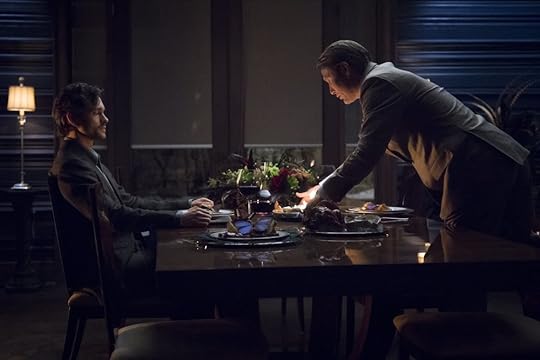

By the third season, when Will abandons his home entirely, he is no longer the man he once was. He trades his homestead for a literal boat and takes to the sea, chasing after Hannibal Lecter in Florence. Will no longer negotiates the gaze, be it of either the audience or Hannibal himself. He no longer hides within the safety of his own four walls, hungry for the sense of wholeness in self-imposed isolation. Brick by brick, Will is becoming someone – and something – other.
Eventually, Will untangles himself from Hannibal and marries Molly Foster. He moves into her life and respective rural home, in a symbolic return to his former vision of idyllic stillness. This space, however affirmative, is filled with objects and furnishings that reflect Molly’s specific interiority, not his. In the meantime, his own interior life has disassembled and replaced by what Hannibal has left behind. Will, as the audience know him, is seeping. He is no longer contained by the Hopper-esque silence of Wolftrap. Instead, and with hardened edges, he inevitably looks forward, disregarding his own previous need for boundaries – both real and imagined – to willingly joins Hannibal in his world.
It is in this collision of aesthetics where Will Graham finally leaves Edward Hopper – and his little house – behind.
March 23, 2016
Santigold, Consumerism, and the Power of Pop

March 22nd marked the second stop on Santigold’s whirlwind .99 tour. The tour just so happened to bring her to my neck of the woods, to perform at the House of Blues in Dallas, Texas. I’ve never seen her in concert, but I’ve adored her music since first stumbling across Master of my Make-Believe two summers ago. Many warm summer afternoons were spent lying on the floor, listening to that album. I’ve had Disparate Youth on repeat in my car ever since.
Santigold’s infectious, almost relentlessly upbeat fusion of punk, reggae, grime, and pop was realized on stage as a tribute to commercialism. Glittering, candy-colored animations of cheaply-assembled, low-end consumer goods were set in the context of familiar urban retail spaces. Dressed in a bright yellow We Buy Gold dress and lo-top kicks, Santigold was joined by her understated backup dancers, who twirled shop signs with the same logo. They invited the audience into the fabricated .99 store that was projected onto the screen behind the stage, where footage of shoppers milling around brightly-lit, well-stocked shelves looped throughout the concert. Her long, loose hairstyle and inconspicuous costuming made her performance look effortless, spontaneous, and fun.
Emphasis on fun.
Interposing this imagery of cheap consumerism were equally shiny and plastic visions of high-end appliances, vacuum cleaners, and tanning beds. The contrast is clear: the low-cost and readily available with the idealized and unattainable. Lifestyle is what we make of it, shopping in Santigold’s very own imagined .99 store and still striving for outdated, stereotypical status symbols. Everything is plastic and pre-made. We’re all feeding into an endless cycle of cheap ephemera, as we chase after the glossy veneer of the next tax bracket up from our current station.
But I don’t think it’s that simple, or that cynical.
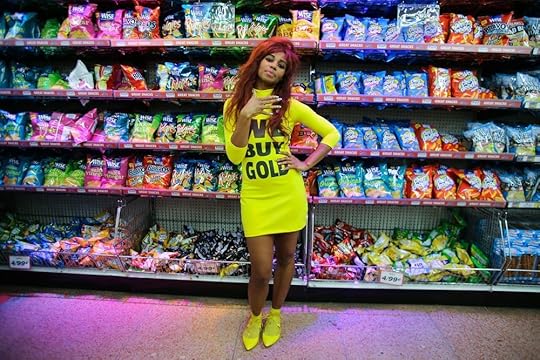
"We have no illusion that we don’t live in this world where everything is packaged. People’s lives, persona, everything, is deliberate, and mediated. It can be dark and haunting and tricky, and freak us out, but it can be also be silly and fun and we can learn to play with it".
-- From Pitchfork Magazine, January 2016
As an album, .99 is about consumption and pretense. The marketing, music videos, and stage performances are a circus of desire and excess. Santigold’s vision of consumer culture is plucked right out of the austere and overwhelming photography of Andreas Gursky. Since the 1990s, Gursky has utilized “new objectivity” to flatten the complexities of individual human experience, examining global consumerism from a cold, safe, and sometimes troubling distance. However, for Santigold, it’s a much more intimate affair.
Her interactive music video for Can’t Get Enough of Myself invites the viewer to take part in her own reflection, consumption, and negotiation of self. The you-as-consumer is allowed to see themselves in the media that they consume, as well as the products they purchase. It’s a means of dissecting the relationship between buyer-seller, consumer-producer, self-façade that we’re often quick to vilify. The track Chasing Shadows is a meditation on the anxiety that comes of measuring the self against our mediated image of other people’s successes:
“Chasing Shadows” is about with the conflicted reality of an artist's life. Caught in the web we spin around ourselves, a mixture of hubris and the guise of perfection, we fear being swallowed up by our own ambition. Never in the moment, as quickly as we reach our goals, our gaze shifts to those still looming in the distance. We judge ourselves harshly for not being further on the path and revel in the anxiety of racing the rate of consumption.
-- From Pitchfork Magazine, January 2016
As an audience, we’re encouraged to face these dichotomies, insecurities, and bombastic celebrations of consumption. We’re invited to engage with these ideas, or to simply kick back and enjoy the theater of it all, for the sake of aesthetic experience. That’s the intriguing and subtle complexity of Santigold’s packaged performance and marketing strategy. It’s so plastic, you can’t help but love it.

Andreas Gursky
diptych 99 cent store II
2001
But for me, at the end of the night, my take-away was much more personal. Standing in a faceless crowd of people, all hungry to see themselves in media, I found myself feeling at home. Santigold’s stage-turned-.99-store was the same kind of place I’ve shopped at, in many cities over many years, because that’s what I’ve had available to me. These were familiar spaces and products, held up as commonplace rather than the object of disdain. As a bubble machine spewed big, soapy bubbles over a neon-washed dance floor, we all (loudly and drunkenly) sang the entirety of Disparate Youth. Halfway through the show, Santigold invited upwards of forty people from the crowd onto the stage for a good, old-fashioned dance line. Some people on stage were so excited they cried. It was hard not to cry with them.
For a few hours on a Tuesday night in Dallas, everyone – regardless of what stores we shopped at – felt happy, and safe, and included.
March 14, 2016
The Crashers: Where Books Come From

All books come from somewhere. The Crashers, my book about superheroes, came out of a lifelong fascination with cape book mythology. It also came out of a love for genre television, and my appreciation for visual storytelling in film as well as comics. So this is a post about where The Crashers came from, and why. Give credit where credit's due, after all.
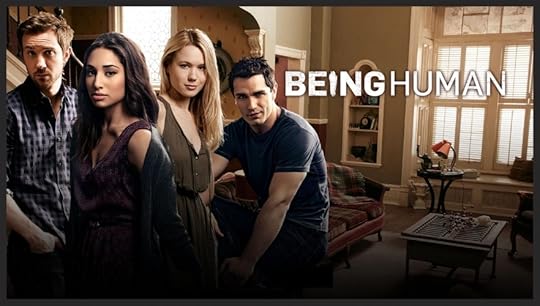
Being Human (US)
One of my favorite shows, probably ever. While I don't dislike the original Being Human (UK), the cast and writing on Syfy's North American adaptation stuck with me. The idea of using genre conventions to tell interesting personal, character-driven stories stuck with me, too. Vampirism as a stand-in for the costs of addiction; lycanthropy as a means to explore mental illness; using death, undeath, and the varying shades of existence in between to talk about grief, isolation, and domestic abuse.
All of this really informed the idea of how people cope with their inner demons -- be they monstrous or common place -- and build a support system out of that. Everyone on Being Human was struggling with baggage and trauma in one way or another, and they leaned on those around them to get through it. Even in the face of horror.
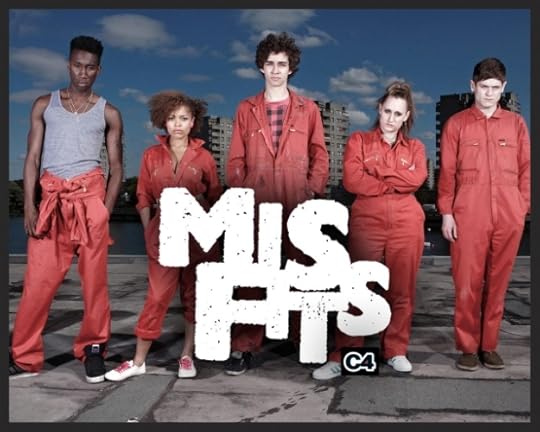
Misfits
Misfits was a show that really resonated with me on a lot of levels. It's tone, visual style, and irreverent --at times flat-out aggressive -- refusal to conform to contemporary audience expectation of the superhero/superhuman genre was so refreshing. The show divorced the idea of superpowers from superheroes, by giving them to the kinds of disadvantaged, maladjusted, and sometimes flat-out self-destructive people we don't often see in conventional cape stories. What would a bunch of people in their late teens/early 20s actually do with superpowers? Nothing heroic, probably.
The show's deft balance of superpowered absurdity -- complete with time travel plots and the occasional costume -- with heartbreaking pathos made it memorable. They may have had powers, but they were still normal, fallible people. They still got their hearts broken. They still bled. They still died. There was never an uplifting moral or a hopeful accomplishment at the end of the day -- just more of the same. But that's life.

Heroes
Oh, Heroes. The show that could've been great, and then really, really wasn't. Between 2006 and 2008, my entire fandom existence was dedicated to this show, even though I am just a little embarrassed to admit it in certain company. I don't need to talk about the uneven writing, the abysmal handling of female characters, and a reckless exuberance for killing off characters of color. We were all there.
All of that said, I'd be lying if I didn't feel a small twinge of nostalgia whenever I think of this show. Because there was a wealth of good ideas and interesting characters, that were unfortunately rarely capitalized on in compelling or lasting ways. If nothing else, it showed that there was an audience for non-Marvel, non-DC superhero fiction in mainstream popular culture. If 20 year old me hadn't been watching Heroes, The Crashers might not have happened.
February 29, 2016
Five Kindnesses to Keep in Mind
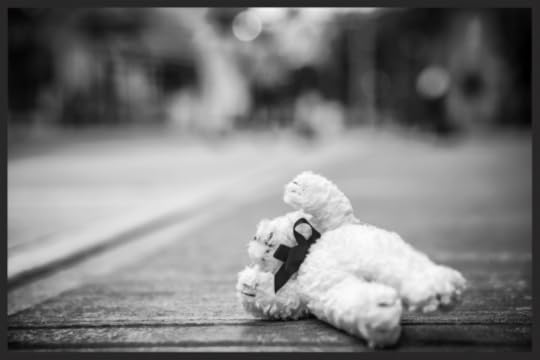
This is a list of kindnesses that I try to keep in mind every day. To keep myself centered, whether in writing or in therapy. Some days, I do better than others. Maybe you could go for some kindness yourself, too.
You are more than a marketable skill.You can't be rendered down to a single skill-set. You are worth more than what you can do for others. You are worth more than your output, creative or otherwise.
You are more than your job.There's more to life than employment. There's more to you than your ability to retain employment. You're not here to work -- you're here to live. And employment should facilitate the means of your life and lifestyle, not consume every aspect of it. Try not to let people shame you for that.
You will never be satisfied with your work.We're never going to reach The Peak we've imagined for ourselves, especially when it comes to creative work. We're never going to rest on our laurels and be forever content. Our lives are made of high summits and low valleys, and our work will always fall somewhere on this spectrum. Harness that essential dissatisfaction. Try to use it do better every time, for yourself and the work you're trying to produce.
You are allowed to feel overwhelmed.Sometimes it hurts. Sometimes it's scary. Sometimes you don't have the answers. You're not stone or steel, and it's okay to break down sometimes. It doesn't make you weak, or selfish, to take some time to feel these emotions. Feel what you have to feel, whenever you need to feel it.
You are allowed to be idle.Just because you can work -- that you're physically or emotionally capable of taking something on -- doesn't mean you have to every time. Remember to take care of yourself.
January 29, 2016
2016: The Road So Far

(Yes, that's a Supernatural reference. I used to be the most obnoxious Cas fangirl, and I regret nothing.)
It's that time of year again. Christmas break came and went with few surprises. I spent most of it indoors, curled up by the space heater with my dog Cecil. I got some reading done; I got even more writing done, all for fun. It was nice to have fun for a little while, even if it was a fairly quiet, lowkey kind of fun. The new academic term is already underway and I'm back in school. Classes are going well, and I'm enjoying the work so far. Graduation is creeping closer and closer. I'm eager, and anxious, to be finished with this part of my education.
Over the break I was at work with my Booktrope team getting The Crashers ready for publication. I'm getting back into that headspace for the first time since completing the second book over the summer. Wading into those waters, typing up all the loose ends and getting ready to promote. I'm eager, and anxious, to put the book out there. Advance review copies will be ready soon, if you're into that sort of thing. If you are, and you've expressed interest in reviewing the book, expect those out in the next month.
Tomorrow, my girlfriend Melissa Dominic is flying in from her native South Florida to spend a few days with me. We've made plans to build pillow-forts, get take-out, and watch all the bad movies. The worse the movie, the better. Expect plenty of pictures of us with the dog.
So far, 2016 is going okay. Now if you'll excuse me, I have to clean my house before my girlfriend gets here.
January 13, 2016
Making Art in a Post-Bowie World

As I’m writing this, it’s only been a few days since David Bowie passed away. I was online when the news first broke. I was chatting with some friends on Twitter – then, well. I didn’t really sleep that night. Instead I was up with everybody else: talking about Bowie’s life, sharing songs and grief.
But this isn’t a post about David Bowie. Not in the strictest sense, anyway. Better writers than me have already shared their fitting summations of his (admittedly complicated) legacy, and provided us with their touching farewells. I could tell you about the hours I spent as a teenager, in rooms in Florida and Texas, listening to his albums. I could tell you about the hours I spent in my 20s, doing much of the same thing. I could tell you about how much his work impacted me, both as a writer and a person, but I won’t do that, either.
Instead, I want to tell you about what it means to me today, sitting in my little room, with my little dog, to make conscious choices about art.
In the last year or so, I’ve been trying to make cognizant efforts to be more open about my life with others online. This blog has taken the shape of a confessional space, in a lot of ways. I try to talk about my writing, of course, but I also try to talk about myself. My family and my relationships, my mental illness and my therapy. My attempts – stumbling though they may sometimes be, like groping for purchase in the dark – to feel like a more complete person. To feel less like a patchwork of scars and broken pieces, and to take the shape of something whole.
I’ve taken up this kind of confessional blogging because it frees me, but also because it seems to – at least on some small level – help other people who read it. I’m by no means a public figure, but I’ve amassed something of a steady online presence through online writing. My platform is meager, at best, but I’m willing to use it to do some good if I can. I may not be famous, but I’m honest. If that honesty helps even one person on the other side of a screen feel a little less alone, then I consider that a check for the win column.
This brings me back to making art. As a writer, I’ve struggled with finding my niche. My voice. There is, as there always has been, a major tension between making art for the masses and making art for oneself. Even if we believe we’re creating art solely for our own benefit, we all want our work to be seen and engaged with by others. We all crave validation of some kind, even in small measures. This contention between what I want to do for myself and what others take away from me is further complicated by my critical writing. For a number of years, I was primarily known for writing about comics rather than prose fiction, as my creative writing took a back seat to what I felt was expected of me. What I felt I was valued for, as I began to feel apologetic for my original work.
After all, if people simply wanted to hear what I had to say in reflection on the work of others, by my estimation, surely what I had to say with my own work wasn’t particularly useful to anyone. The things I felt – about the media, about art, about subjectivity – could be better expressed through criticism. They could be more neatly packaged that way; a little less personal, a little more public. Even though I never really felt comfortable, or even effective, doing that kind of writing, it felt like a shield to hide behind. A way to write, and to express ideas, without having to be responsible for my own fiction and the potential for failure.
We would all like to be paid for the work that we do, as well, of course, regardless of its form and content. The economic circumstances of those who make art are often dour at best, and dire at worst. But with the idea of the niche comes the expectation to appeal to certain cultural, aesthetic, or sentimental values in order to be economically successful. And like many others who make art, my own economic circumstances hover between dour and dire on a regular basis. In the last year, I shifted away from criticism and back to creative writing. From creative writing, I’ve shifted toward publishing, and all of the uncomfortable realities that come with it. This forces you to become more business-minded, and I’m not particularly cut out for business.
As it stands today, I’ve made peace with the all-but-certain reality that I will never make a meaningful, livable wage off my writing. I just won’t. I’ll always need a day-job. I’ll always have to struggle to find time to write – stealing hours in the day around school, work, and other responsibilities. And that’s become freeing. Just as leaving criticism, for the time being, has been freeing. Without the expectation of fitting into a neat, tidy, and marketable mold – without the expectation of anyone actually buying my work and giving a shit – I’ve felt more free to write what I choose to write.
I feel more free to feel emotional and strange. I feel more free to try to make something meaningful, even if it’s only meaningful to a small group of people. I would like to make meaning for myself, out of myself, in the hope that it will someday reach somebody who needs to see it. I would like to try, even if I fail commercially – because I don’t expect to succeed commercially, anyway. So what difference does it make?
What I want to write, at least for the foreseeable future, is superhero fiction, in the form of The Crashers. You could say I’m buying in. After all, I’ve chosen to work within the genre at a time when superheroes are the biggest mainstream cultural touchstone since Star Wars. You wouldn’t be wrong for that criticism, I think. I’m not reinventing the wheel here or anything, and certainly superhero deconstruction is well-traveled territory.
However nakedly commercial my chosen genre is, I want to make things that make me feel the way I felt when I first heard Space Oddity, or Young Americans, or Lady Stardust. This is why this post is only tangentially about David Bowie. These are songs that have always made me feel less alone – sitting in rooms in Florida and Texas, feeling out of step with everything else. Taking some sense of solace in his work, and giving myself the space to feel that it was okay to be strange. To feel queer, and sad, and lonely, and connected to something outside of myself.
I realize now that I would like to write things that make me feel less alone, too. If I’m successful, other people might feel less alone with me. Perhaps we could all be less alone together, sharing something, even if it’s small. It’s a nice thought to have, anyway – a decent goal to strive for. Because that’s what art is about. That’s what music and fiction are about.
If anything, in these early days after the death of David Bowie, while we’re still figuring out how to make art in a post-Bowie world, that’s what I would like to remember most of all.



